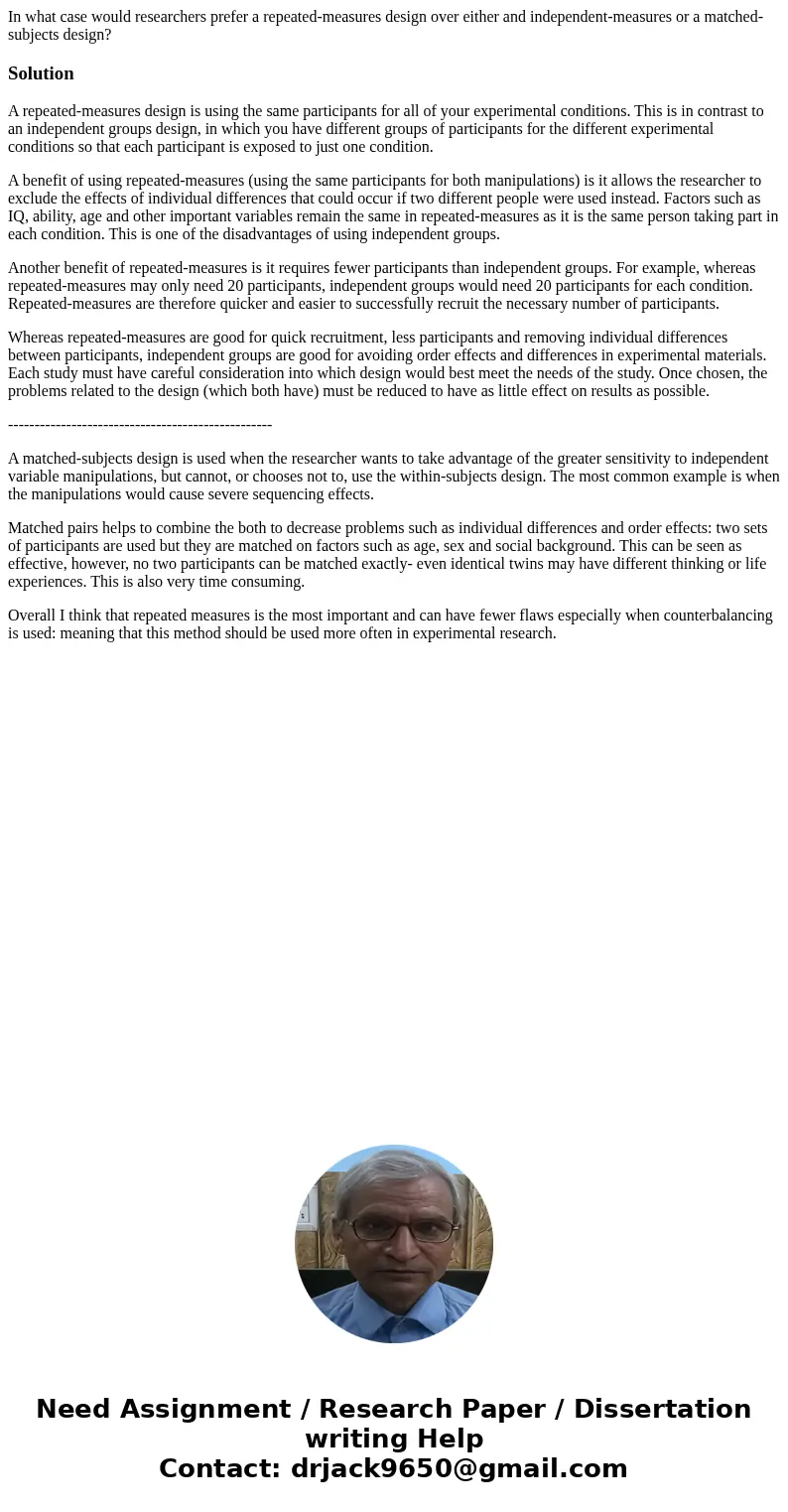In what case would researchers prefer a repeatedmeasures des
In what case would researchers prefer a repeated-measures design over either and independent-measures or a matched-subjects design?
Solution
A repeated-measures design is using the same participants for all of your experimental conditions. This is in contrast to an independent groups design, in which you have different groups of participants for the different experimental conditions so that each participant is exposed to just one condition.
A benefit of using repeated-measures (using the same participants for both manipulations) is it allows the researcher to exclude the effects of individual differences that could occur if two different people were used instead. Factors such as IQ, ability, age and other important variables remain the same in repeated-measures as it is the same person taking part in each condition. This is one of the disadvantages of using independent groups.
Another benefit of repeated-measures is it requires fewer participants than independent groups. For example, whereas repeated-measures may only need 20 participants, independent groups would need 20 participants for each condition. Repeated-measures are therefore quicker and easier to successfully recruit the necessary number of participants.
Whereas repeated-measures are good for quick recruitment, less participants and removing individual differences between participants, independent groups are good for avoiding order effects and differences in experimental materials. Each study must have careful consideration into which design would best meet the needs of the study. Once chosen, the problems related to the design (which both have) must be reduced to have as little effect on results as possible.
--------------------------------------------------
A matched-subjects design is used when the researcher wants to take advantage of the greater sensitivity to independent variable manipulations, but cannot, or chooses not to, use the within-subjects design. The most common example is when the manipulations would cause severe sequencing effects.
Matched pairs helps to combine the both to decrease problems such as individual differences and order effects: two sets of participants are used but they are matched on factors such as age, sex and social background. This can be seen as effective, however, no two participants can be matched exactly- even identical twins may have different thinking or life experiences. This is also very time consuming.
Overall I think that repeated measures is the most important and can have fewer flaws especially when counterbalancing is used: meaning that this method should be used more often in experimental research.

 Homework Sourse
Homework Sourse